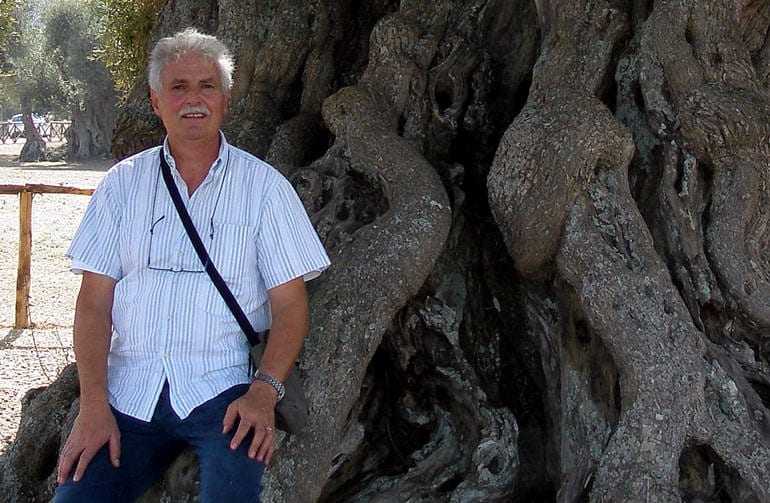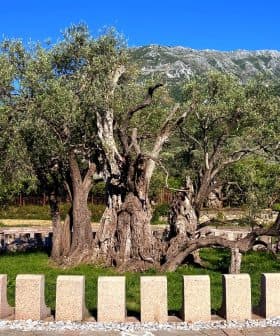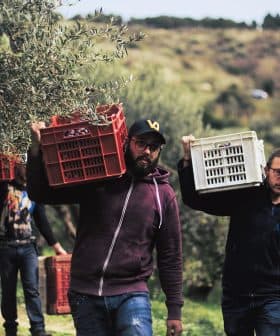On the Preservation and Maintenance of Monumental Olive Trees
Giorgio Pannelli, an expert in olive tree maintenance, emphasizes the importance of intervention to maintain the monumental attitude of ancient olive trees in Italy. These trees, found in various regions of Italy, are not only significant for their historical value but also require careful pruning to prevent damage and maintain their structural integrity.
The olive tree is living proof that beauty has nothing to do with perfection. The evolution of the twisted and gnarled wood into the collection of lanceolate and graceful leaves reaches the best aesthetic expression in monumental plants: the slashes imprinted in the secular structure express the history over the centuries, like the signs of time shape a human face.
With more than 30 years of experience in research and olive oil production in every segment of the supply chain both agronomic and technological, and over 260 scientific and educational publications, Giorgio Pannelli is a leading expert in the maintenance of monumental olive trees.
We cannot intervene too heavily on the structure of the plant if we want to maintain the monumental attitude.
“Monumental olive trees are large-sized plants with a very rich and solid woody structure,” Pannelli explained. “The features of these plants are due to their age, to the DNA influence on the stamina, to the cultivation environment and to the health conditions,” so that in a condition of prolonged fertile seasons, a plant with intrinsic stamina and a healthy structure can reach significant dimensions over centuries and millennia.
“The intervention of maintenance is needed to ensure a longer life to the plant,” Pannelli affirmed. Especially if the olive tree has been untreated for many years, our action is fundamental to avoid breakages and downfalls, in addition to prevent the outbreak of diseases.
There are several monumental plants in Greece and Spain, but Italy is the only country with such a large patrimony, spread out over the peninsula: from Apulia (2 million of plants in the province of Brindisi and Lecce) to Tuscany (in the province of Grosseto), from Umbria (Trevi, Terni and Lake Trasimeno) to Abruzzo (in Fossacesia, in the province of Chieti) and Latium (in Palombara Sabina) and many more.

Giorgio Pannelli
Among the most ancient include an olive tree in Magliano in Toscana (Tuscany) which probably dates back to the Etruscan period (500 – 800 BC) and the olive tree of Saint Emiliano in Trevi (Umbria), which takes its name from the legend of the saint martyred in that place in 303 AD when Diocletian’s edict authorized the persecution of Christians.
“Regarding the maintenance, we first have to establish if our purpose is ornamental or productive,” Pannelli clarifies. “Productive use is partially compromised, since we cannot intervene too heavily on the structure of the plant if we want to maintain the monumental attitude,” but if our objective is a good harvest, we can aim to preserve the dimensions of the plant and make it manageable, to prevent the use of elevated work platforms for pruning and harvest. “It is imperative not to undermine the monumental aspect of the plant: our goal is to rationalize,” Pannelli explained.
If the olive tree is too tall and extended will have compromised stability. The lateral branches are the heaviest part of canopy and climatic events like wind and snow can cause serious damages, even downfall, if the plant moves too far from its center of gravity. Therefore, we must prune to limit both the height and the lateral expansion.

A monumental tree in Villa Adriana before and after restoration.
“If you are maintaining a monumental olive tree for an ornamental purpose, you also have to disclose the woody structure,” Pannelli illustrated. “An impressive trunk and large branches add majesty to the imposing attitude of the plant.” Therefore, we must cut off the branches (that otherwise would have been maintained for the productive purpose) which descend to hide the trunk to expose the most consistent portion of the woody structure. In essence, this is the difference between the two types of interventions.
A monumental olive trees has an aesthetic destination, since production efficiency is undermined due to the elevated costs to maintain them. Often, producers will use these secular trees as emblems of an olive oil produced from younger plants of the same variety. “These plants are icons of a territory, a heritage, a tradition, a culture,” our expert considered.
In Villa Adriana, in Latium, Pannelli conducted a three-year project with the olive growing cooperative ACO and the collaboration of CNR Institute of Biosciences and Bioresources IBBR of Perugia managing the maintenance of 14 monumental olive trees.
The pruning was conducted between December and March with mobile platforms and forklifts that allowed the operators to work safely. “A proper pruning is done with cuts that respect the natural shape of the canopy, the structure and biological and physiological mechanisms of the plant. Despite having eliminated the dense, heavy, or damaged parts, it keeps the original appearance of the foliage,” as reads the interesting report of the project.
In addition to the restoration, the IBBR conducted the varietal identification and radiocarbon dating with interesting results: the most ancient plants (the oldest is supposed to be about 660 years old) belong to an unknown variety.
An interesting fact about dating monumental olive trees is the difficulty in calculating the age because the inner part of the origin area tends to disappear due to diseases over the centuries. The wood keeps growing laterally but is internally hollow, often making it impossible to calculate the exact age, leaving scientists to estimate using available data.



